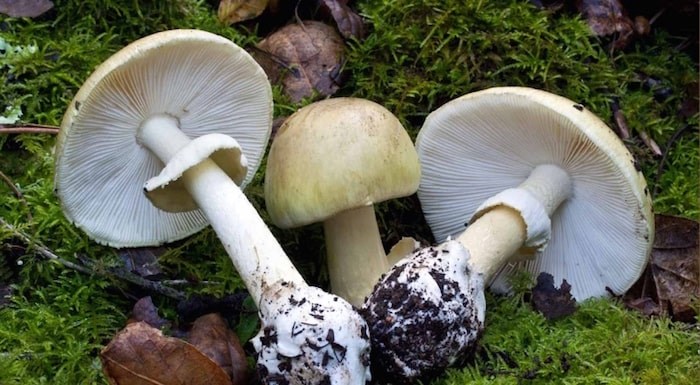A child in the Vancouver Coastal Health region has been sent to hospital after eating a piece of a toxic death cap mushroom.
Raymond Li, a pharmacist at the B.C. Poison Control Centre, confirmed to Glacier Media the poisoning took place in Vancouver at Kits Point, home to the popular Kitsilano Beach. The child has since recovered after receiving medical attention.
“It was close," said Li.
The incident was unusual for this time of year, and has prompted officials to warn the public to exercise caution. Normally, the death cap mushroom (known in Latin as Amanita phalloides) doesn't pop up until the wet fall months. But authorities suspect urban irrigation has set the conditions for the potentially deadly mushroom to show up early this year.
Often found in urban environments, in the past, death cap mushrooms have been spotted across B.C.’s Fraser Valley and Lower Mainland, as well as on the Gulf Islands and Vancouver Island — most recently in Greater Victoria and Comox. Li said the location of the latest poisoning — in Vancouver's Kitsilano neighbourhood — is less important than the kind of tree species that line the city's streets and fill in its parks.
The mushrooms are not native to B.C., but are thought to have come to the province from Europe on the roots of urban trees, including chestnuts, oaks, hazelnut and beech species. Those trees often have long root systems that reach across property lines.
"So if people are irrigating say their own gardens or landscaping, that may produce the conditions that allow them to actually pop up," Li said.
Once ingested, the toxins from death caps can damage the liver and kidney. Six to 12 hours after eating the mushroom, people often feel cramps and abdominal pain. The mushrooms can also induce vomiting, diarrhea and dehydration.
Some of those symptoms may diminish after 24 hours, but the toxins remain in the body, and can trigger a second wave of symptoms — potentially leading to severe illness and organ failure — after 72 hours.
“Medical treatment and organ transplants may be required to prevent death,” warns the Provincial Health Services Authority.
"Kids and pets finding a random mushroom on the lawn — most times it's not going to be a big deal. So parents shouldn't panic. However, if any ingestion does occur, they should certainly call Poison Control Centre right away," said Li.
The Drug and Poison Information Centre recommends collecting the whole mushroom including its base, or taking high-quality pictures of it (including the cap, gills, stem and base). Li added it's also important to note the trees it was growing on or near to help identify it later.
Anyone suspecting a case of mushroom poisoning is encouraged to call poison control at 1-800-567-8911.
There are over 3,000 species of mushroom in B.C., but Li says there isn't a lot of information on many of them. The death cap mushroom stands out as "particularly nasty," Li said.
"For people who are interested in foraging and eating wild mushrooms, be careful. Do not eat anything that is not properly identified as being edible," he said. "Don't guess. Be sure."
If you find a death cap mushroom but nobody has eaten it, consider reporting it to authorities using the following checklist:
- Note the location, take careful photographs, and report it to government.
- Remove the whole mushrooms, bag them, and dispose of them in the garbage. If ingested, save the remains of the mushroom and call poison control.
- Do not dispose of death cap mushrooms in your home compost.
- Touching death caps is not a risk but gloves are recommended.
- Wash your hands after removing the mushrooms.


